Back to Basics
Intro to Deep Learning : CNNs
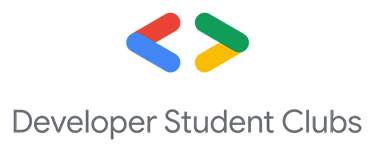
Part 2 of 3
"Back to Basics"
- This is a three-part introductory series :
-
- Appropriate for Beginners!
- Code-along is helpful for everyone!
- Last week : MLPs (& fundamentals)
- This week : CNNs (for vision)
- Next week : Transformers (for text)
Event Extras
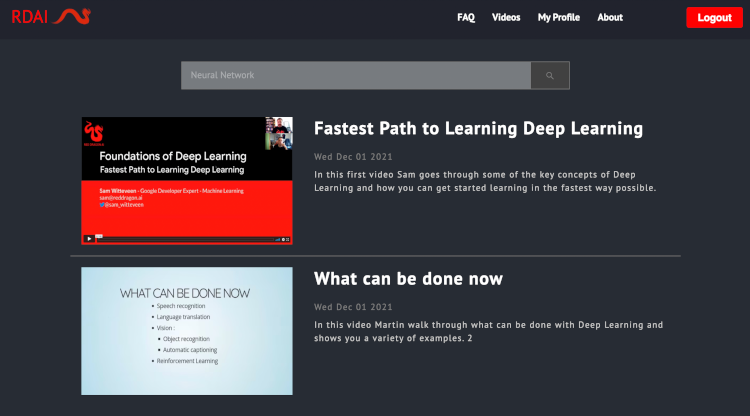
Plan of Action
- Each part has 2 segments :
-
- Talk = Mostly Martin
- Code-along = Mostly Sam
- Ask questions at any time!
Today's Talk
- (Housekeeping)
- Vision use-cases
- 2 new Layers!
- Representation Learning
- Concrete example(s) with code
-
- Fire up your browser for code-along
About Me
- Machine Intelligence / Startups / Finance
-
- Moved from NYC to Singapore in Sep-2013
- 2014 = 'fun' :
-
- Machine Learning, Deep Learning, NLP
- Robots, drones
- Since 2015 = 'serious' :: NLP + deep learning
-
- GDE ML; ML-Singapore co-organiser
- Red Dragon AI...
About Red Dragon AI
- Google Partner : Deep Learning Consulting & Prototyping
- SGInnovate/Govt : Education / Training
- Research : NeurIPS / EMNLP / NAACL
- Products :
-
- Conversational Computing
- Natural Voice Generation - multiple languages
- Knowledgebase interaction & reasoning
Vision Basics
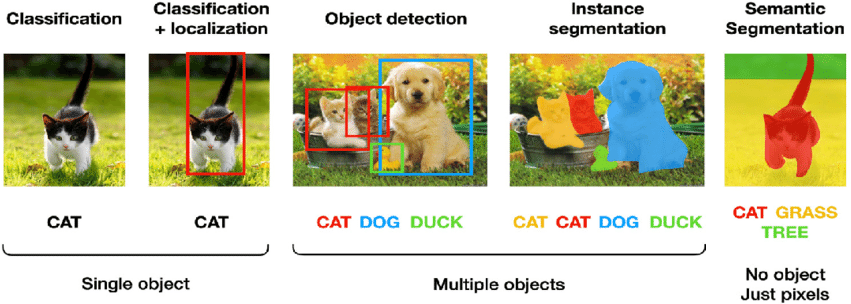
Adapted from here
Vision Applications
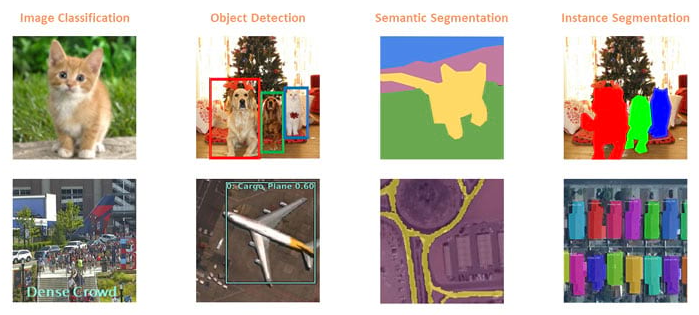
From : Deep Learning meets GIS
Example : Hens
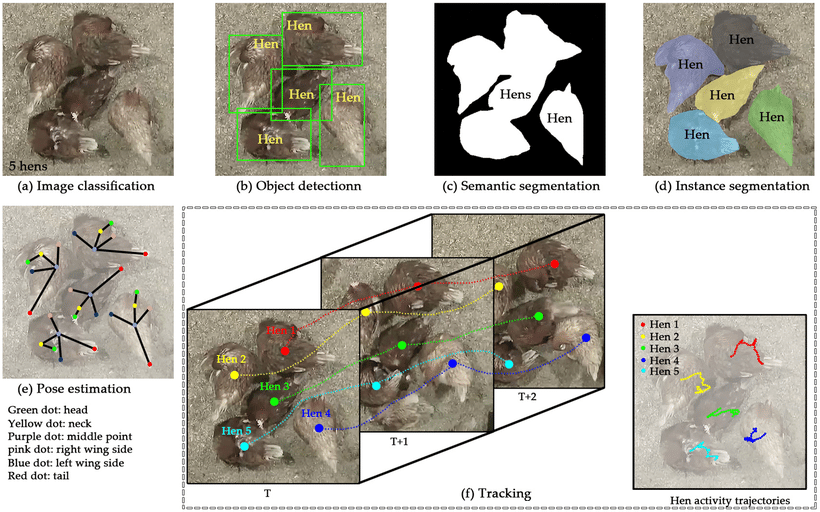
Practices and Applications of Convolutional Neural Network-Based
Computer Vision Systems in Animal Farming: A Review
- Li et al (2021)
Vision Extras
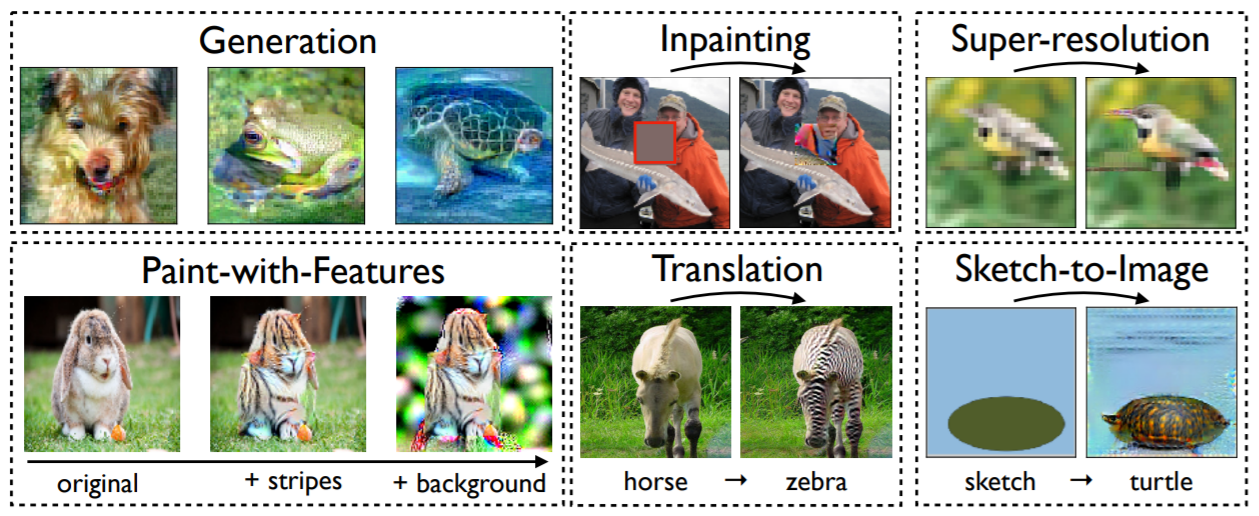
Image Synthesis with a Single (Robust) Classifier - Santurkar et al (2019)
Pre-Deep Learning Vision
- Get a bunch of patches
- Match them to the image
- Use Match vs not-Match as features
- ... as input to a 'shallow' classifier
OpenCV-era plan
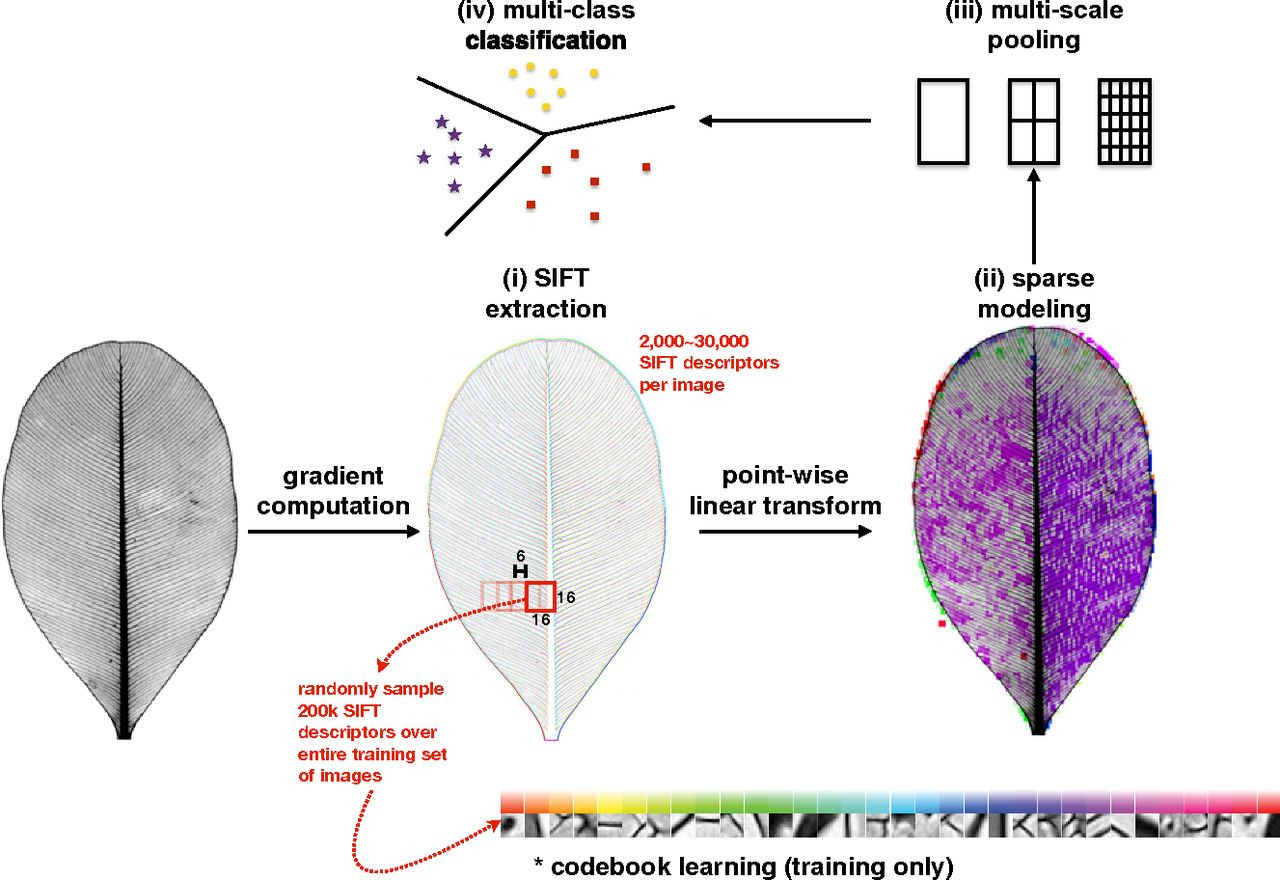
Computer vision cracks the leaf code - Wilf et al (2016)
OpenCV-era codebook
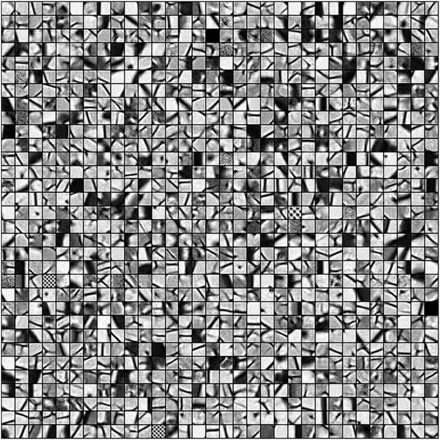
Computer vision cracks the leaf code - Wilf et al (2016)
Key take-aways
- Images have key elements:
-
- Textures; Lines; Shapes
- Translational invariance
- ...
- But building these elements by hand is too difficult
- Results ~ way below human performance
Deep Learning version
- Make the computer learn from data:
-
- Make the 'codebook' into ...
- ... trainable parameters
- Results ~ Better than Humans!
Deep Learning requirements
- Need a 'patch detector' Layer:
-
- Parameterised patches across whole input image
- Need a 'scaling' Layer:
-
- Allow several 'scales' within image
- ... so parts can relate to whole
Convolutional Layer
- Key ideas:
-
- Have small 'patches' ...
- ... with trainable parameters
- ... and slide over whole image
- ... to make a new image
- Similar to other Layers : Combinable
CNN Operation
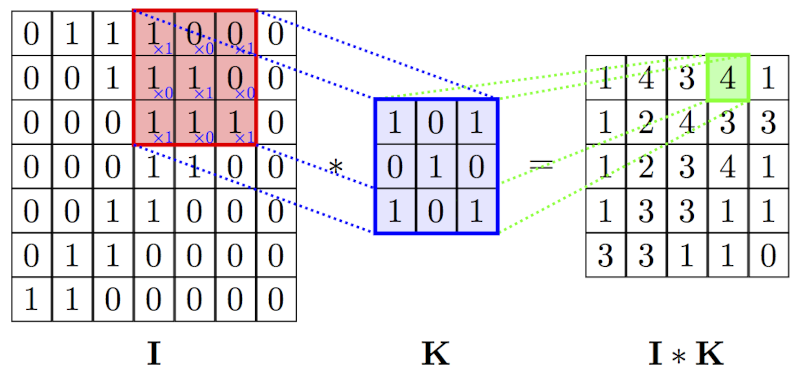
Play with a CNN Kernel
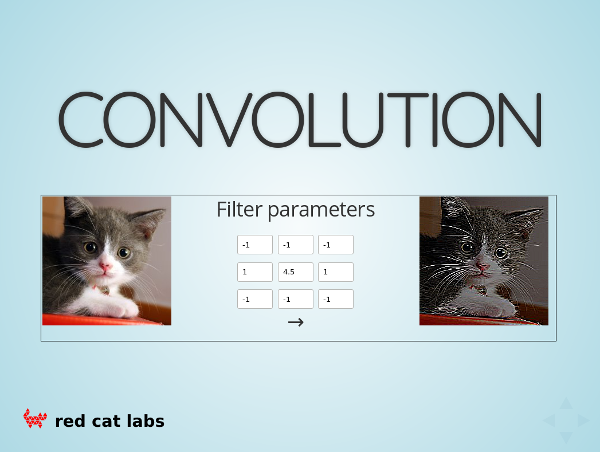
Conv2d Notes
- Key ideas:
-
- Just a few parameters for whole image
- Patches are typically small
- ... but are stackable to increase 'area'
- Very suited to GPU speedup
- One layer can include many kernels (channels out)
CNN stacking
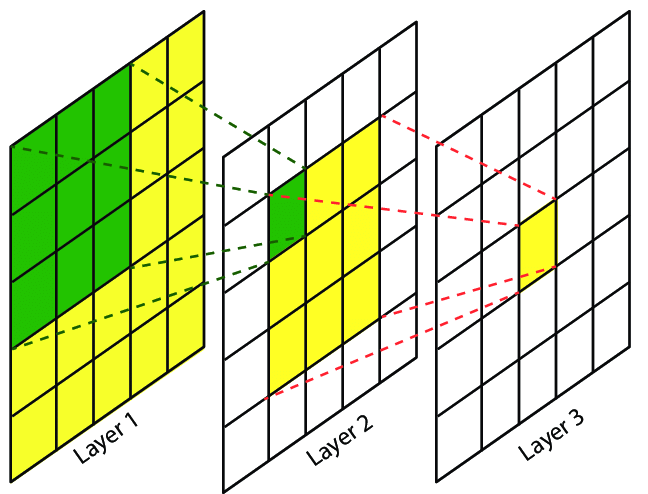
Maritime Semantic Labeling of Optical Remote Sensing Images
with Multi-Scale Fully Convolutional Network
- Lin et al (2017)
Scaling Layer
- Key ideas:
-
- Want to shrink image ...
- ... so that parts become 'nearer'
- ... and can then be put into a small
ConvLayer - ... to make a new image
- Similar to other Layers : Combinable
MaxPool Operation
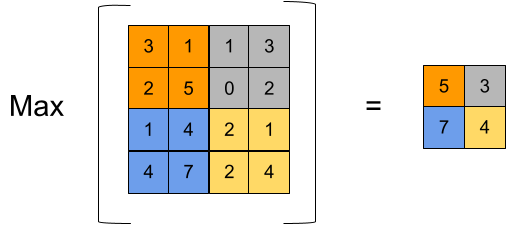
MaxPool2d Notes
- Key ideas:
-
- Just shrinks the image
- ... but with some 'competition'
- Has no trainable parameters
Deep Learning-era Plan
- Build the structure carefully
-
- CNN image layers
- and classifier at the end
- Learn all the parameters
-
- ... of the CNN and the classifier
- Train from end-to-end
Deep Learning plan
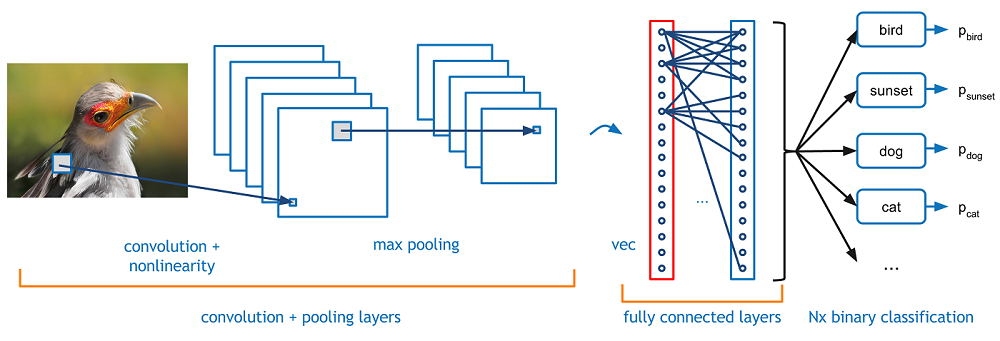
Deep Learning Model
- Input is an RGB Image (3 channels)
- Use
ConvandMaxPoolLayers - Then
Flattenthe output - Feed into an MLP classifier (
DenseLayers) - Output a
SoftMaxclassification - Train just like last week
Summary so far
- We're about to do hands-on Deep Learning!
- In the code-along you will:
-
- Grab a more difficult dataset
- Build a model using :
-
Conv2d,MaxPool2d,Flatten,DenseandSoftMax
- Measure the model error and fit the model to the data
- ... and do some model analysis
- We'll get to do some Transfer Learning next week...
- Code-Along! -
Extension... :
Representation Learning
- Let's think about what we've built:
-
- CNN Layers learn something ...
- ... that can be easily classified
- Comparing to the OpenCV version:
-
- The CNN layers learn about 'vision'
Denselayers learn about our classes
- IDEA : use the trained 'vision' part
- ... separately from the original task
Representations ⇒
Transfer Learning
- New Process :
-
- Find a difficult (generic) vision task
- ... and learn to solve it (hard)
- Then, take the trained network to pieces
- Use the pieces to build new models
- This allows us to re-use large datasets & models
- ... and get good results with small(er) datasets
Further Study
- Field is growing very rapidly
- Lots of different things can be done
- Easy to find novel methods / applications
Deep Learning Foundations
- 3 week-days + online content
- Play with real models & Pick-a-Project
- Funding, Certificates, etc
- 3 day course
Deep Learning for PMs
( = Foundations - code
+ management )
+ management
- Much more about 'big picture'
- Only a few code examples
- Project process standardised
- 3 day course
Vision (Advanced)
Advanced Computer Vision with Deep Learning
- Advanced classification
- Generative Models (Style transfer)
- Deconvolution (Super-resolution)
- U-Nets (Segmentation)
- Object Detection
- 2 day course
Sequences (Advanced)
Advanced NLP and Temporal Sequence Processing
- Named Entity Recognition
- Q&A systems
- seq2seq
- Neural Machine Translation
- Attention mechanisms
- Attention-is-all-You-Need
- 3 day course
Unsupervised methods
- Clustering & Anomaly detection
- Latent spaces & Contrastive Learning
- Autoencoders, VAEs, etc
- GANs (WGAN, Condition-GAN, CycleGAN)
- Reinforcement Learning
- 2 day course
Real World Apps
Building Real World A.I. Applications
- DIY : node-server + redis-queue + python-ml
- TensorFlow Serving
- TensorFlow Lite + CoreML
- Model distillation
- ++
- 3 day course
Deep Learning
MeetUp Group
- Next Regular Meeting ~ 21-December
-
- Hosted by Google
- Typical Contents :
-
- Talk for people starting out
- Something from the bleeding-edge
- Lightning Talks
- MeetUp.com / Machine-Learning-Singapore
Event Extras

- QUESTIONS -
Martin @ RedDragon . ai
Sam @ RedDragon . ai
My blog : http://mdda.net/
GitHub : mdda